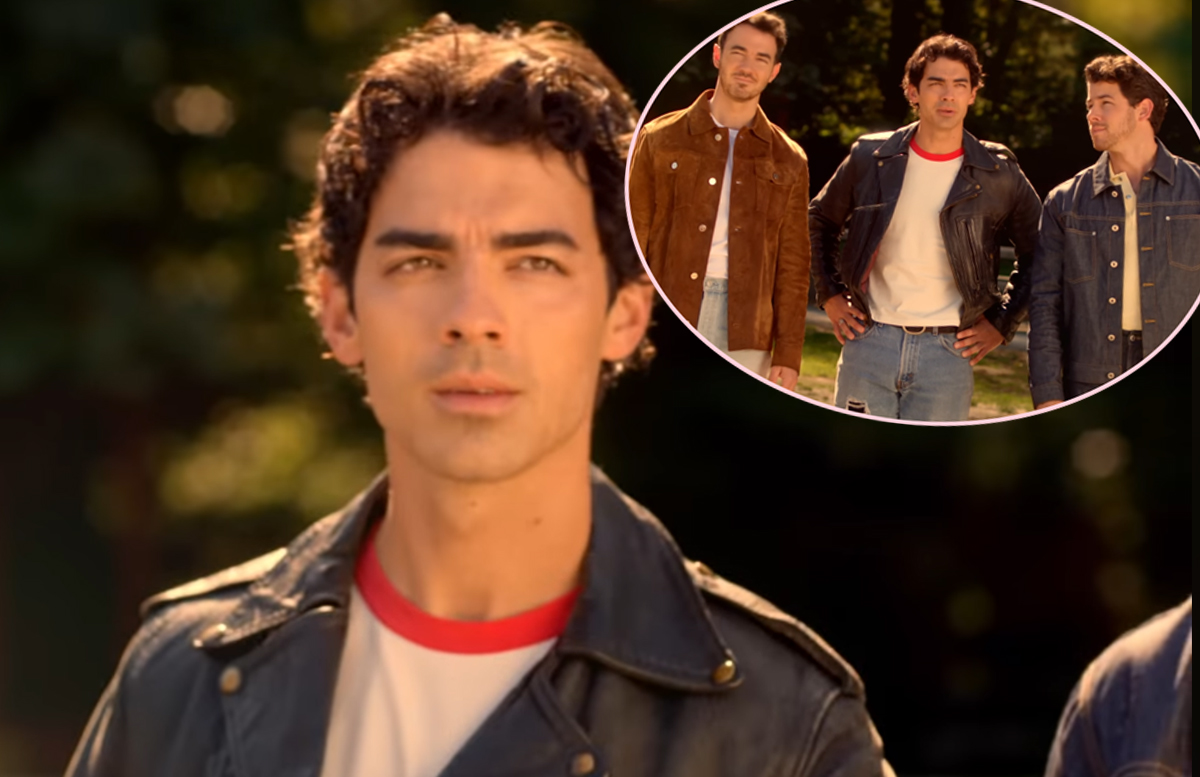Yes ended the ’70s in complete disarray. They’d argued over the musical direction taken on 1978’s Tormato, and even argued over the artwork. Long-time engineer Eddy Offord simply walked away. By the time they reconvened in 1980, Jon Anderson, Rick Wakeman and Steve Howe were gone, too.
The lineup for 1980’s Drama wouldn’t last. The LP became an international Top 10 hit, but its highest-charting single, “Into the Lens,” could get no further than No. 104 in the U.S. Still, the arrival of Trevor Horn changed their career trajectory forever. He just had to switch from erstwhile Anderson replacement to producer and occasional engineer.
Horn helped shape a core group of demos from new guitarist Trevor Rabin into a series of high-charting singles, including Yes’ first-ever No. 1 song in “Owner of a Lonely Heart.” It wasn’t supposed to be that way. In an era of dissolution for Yes, Rabin had originally hooked up with bassist Chris Squire, drummer Alan White and then keyboardist Tony Kaye in a group they called Cinema. They were only rebranded as Yes when Anderson returned late in the proceedings.
READ MORE: Top 10 Yes Songs of the ’70s
The results met the moment as MTV came on the air. Yes’ next album, 1983’s 90125, sold millions behind flashy videos and even flashier outfits. But the era also set a new hitmaking standard for a band once known for complex songs that could cover an entire side of an album.
Yes was clearly under intense pressure to live up to those sales. Big Generator, took years to complete – and it still arrived with a few flop-sweat stains. Anderson, the unreconstituted hippie, pushed for songs with deeper meanings but that wasn’t what moved product off store shelves. Big Generator “only” went platinum in 1987 behind a pair of Top 40 singles, “Love Will Find a Way” and “Rhythm of Love.”
Yes ended the ’80s in disarray, as well. Four of its main creative forces would go on to form Anderson Bruford Wakeman Howe, releasing a self-titled 1989 album that reached the Top 40 and spawned a huge tour. Yes wouldn’t return until 1991’s Union, a Frankenstein monster of an album that combined Anderson Bruford Wakeman Howe songs with tracks recorded by other members of Yes.
The best of this turbulent era somehow found a way to balance all of these competing personalities and career objectives. Here’s a look back at the Top 10 Yes songs from the ’80s:
No. 10. “Hold On”
From: 90125 (1983)
Other than “Owner of a Lonely Heart,” no song from 90125 is more closely linked to Trevor Rabin. “Hold On” was constructed from two demos with similar tempos that Rabin was working on before Yes reunited around him, using the chorus from “Hold On” and verses from “Moving In.” Chris Squire and the late-returning Jon Anderson earned co-writing credits for after making musical and lyrical additions. “Hold On” charted twice for Yes on Billboard’s Mainstream Rock charts, with a live version going to No. 27 in 1985.
No. 9. “Love Will Find a Way”
From: Big Generator (1987)
Another old Rabin demo, as heard on his smartly titled 90124 compilation from 2003. He wrote “Love Will Find a Way” with Stevie Nicks in mind before stalwart Yes drummer Alan White convinced Rabin to give it to Yes. They were moving further and further away from the group’s core knotty prog sound into ear-wormy pop, but White’s hunch paid off: Yes scored another Top 40 hit. “Love Will Find a Way” also topped the Mainstream Rock charts for three straight weeks, though it was nothing of the sort.
No. 8. “Hearts”
From: 90125 (1983)
Anderson clearly loved “Hearts.” Rabin arrived with a chorus and bridge for this warm, emotionally engaging track, then further developed the melody. Anderson created its imaginative counter-melody and Kaye added a keyboard intro. Anderson then revisited the tune on 1994’s Change We Must, a classically inspired orchestral solo release. “It was just such a good song,” Anderson later said. “I was falling in love with my now wife Jane and we’ve been together since that moment. I just felt that song had a lot of meaning to me.”
No. 7. “Leave It”
From: 90125 (1983)
A triumph of nervy, only-in-the-’80s production by Trevor Horn, “Leave It” was finished by Chris Squire, Trevor Rabin, Alan White and Tony Kaye before Jon Anderson returned to the fold. He joined Rabin in a co-lead vocal, but otherwise “Leave It” was left as it was to become Yes’ fourth-ever Top 40 song. They saved all of the tinkering for the accompanying video, creating 18 different versions – all of which were broadcast in a row at one point on a content-starved new channel called MTV. (The 11th one went into heavy rotation.)
No. 6. “Brother of Mine”
From: Anderson Bruford Wakeman Howe (1989)
The decade ended with a band not called Yes, including most of those credited with the Yes sound, issuing an album that sounded just like … well, Yes. Only, for contractual reasons, the band was called Anderson Bruford Wakeman Howe. They began by building off a chorus for “Brother of Mine” from Howe. The song was quickly expanded into a soaring three-part epic, concluding with a section that dated back to Howe’s time in Asia with Geoff Downes. Unfortunately, their lone gold-selling LP didn’t always live up to that early promise.
No. 5. “Changes”
From: 90125 (1983)
“Changes” was the second of four 90125 songs that reached the Top 10 on Billboard’s mainstream rock charts, helping Anderson’s comeback LP to three million in sales. Trevor Rabin began the song when the group he was in with Chris Squire and Alan White was still called Cinema. They reverted to Yes when Anderson came on board – and “Changes” changed, too. “I had a different chorus, as you can hear on 90124,” Rabin later revealed. “Getting rid of the chorus melody, and having Jon’s in there, really added to the song.”
No. 4. “It Can Happen”
From: 90125 (1983)
Even in this polished new era, Yes could still be stubbornly romantic and blessedly weird. “It Can Happen” proved it. In some respects (Anderson’s quixotic splendor, Squire’s trembling bass line), the song unfolds in typical Yes fashion. But it’s driven along by an out-of-nowhere sitar riff – and that’s before Rabin’s backing vocal (“it’s a constant fight“) fragments into an element of the rhythm. In the end, “It Can Happen” might have been a little too weird for newly onboarded fans of “Owner of a Lonely Heart.” Yes stalled out at No. 51.
No. 3. “Tempus Fugit”
From: Drama (1980)
Originally recorded without Jon Anderson, “Tempus Fugit” became something of a setlist mainstay immediately after his final departure. Chris Squire acknowledged, however, that this furiously complex song gave him fits. “Going back to play ‘Tempus Fugit’ absolutely was a challenge for me, because the bass playing at the same time as the vocals is not an easy thing to pull off,” he said in 2012. “It’s quite complicated, the harmonies and the bassline.” Billy Sherwood took over after Squire was felled by leukemia.
No. 2. “Shoot High, Aim Low”
From: Big Generator (1987)
“Shoot High, Aim Low” was tucked away deep on Side 1 of Big Generator, but still provided one of the few saving graces on a disappointing, four-years-in-the-making followup to the smash 90125. Anderson said he insisted on making another passionate call for peace. “I was pushing the band back to doing Yes music, basically,” he later argued. “We were just making hit records, and that was the problem of the ’80s.” Co-writer Rabin adds crisp guitar asides, including a flinty Spanish-themed section, but Anderson soon left for ABWH.
No. 1. “Owner of a Lonely Heart”
From: 90125 (1983)
Trevor Rabin arrived at these sessions with a solo demo of “Owner of a Lonely Heart.” He’d already conceptualized most of the song’s key elements — even the bursts of orchestral noise, which were represented by occasionally inadvertent keyboard flourishes. “When we started the record, in talking with (90125 producer) Trevor Horn, he said we should retain that stuff. We’ll just record that really cleanly,” Rabin later remembered. “That’s kind of how it evolved. All of the accidents on the demo, ended up on the record.”
Bands With No Original Members
Gallery Credit: Nick DeRiso
Steve Howe Released One of Rock’s Most Hated Albums











![‘Our Hero, Balthazar’ Thwarts a Would-Be School Shooter in First Images For Wild Satire Starring Noah Centineo and Asa Butterfield [Exclusive] ‘Our Hero, Balthazar’ Thwarts a Would-Be School Shooter in First Images For Wild Satire Starring Noah Centineo and Asa Butterfield [Exclusive]](https://static1.colliderimages.com/wordpress/wp-content/uploads/2025/06/untitled-design-70.jpg)





